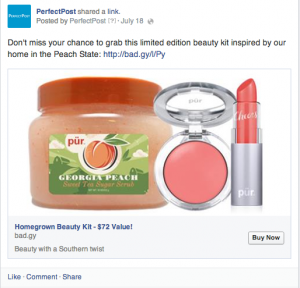Are you interested in learning how to lower your bounce rate and skyrocket user engagement? If you’re like most of us, the answer is yes.
Google’s definition of a bounce rate is simple to understand and an excellent starting point. They define a bounce rate as:
“A bounce is a single-page session on your site.”
In other words, when someone visits your website and fails to navigate to a second page before leaving, they are contributing to your bounce rate.
If you’re curious about the average rates across all industries, we have you covered:
- 75%+ – Poor
- 50% to 74% – Average
- 30% to 50% – Excellent
- 20% or Less – This is usually due to a tracking error
Today, we want to explore the primary causes of a high bounce rate. We will also offer solutions that you can use to solve these issues and build a better user experience.
Let’s dive in!
Slow Loading Times
If your website takes too long to load, you can guarantee that it’s partially responsible for users bouncing. A one-second delay in loading times can lead to a 7% loss in conversions, 11% drop in pageviews, and 16% drop in customer satisfaction.
On average, people wait about two seconds for a page to load before they start leaving. After that, you’ll see a consistent drop-off of people who are willing to wait. If you want to optimize your site for speed, I suggest looking at your speed report on Google Search Console.
You’ll find a list of suggestions that can help you trim down parts of your site and improve speed and performance.
There are also caching tools and CDNs that you can use to reduce the size of your files and allow quick access for returning visitors. You’ll want to check how your site performs across a wide range of devices and software if you want to broaden your reach to as many people as possible.
Clunky User Interface
Once your site loads, visitors should be met with a sleek and accessible user interface (UI). This feature is absolutely essential to your success across all platforms. If visitors cannot interact with crucial parts of your website, there’s a good chance they will leave without looking back.
You can tell if users are having trouble from specific platforms by looking at your Google Analytics reports. If you notice that 75% of your desktop users make up your bounce rate, there’s likely an issue with your interface or page design.
Similarly, if you see the same numbers for your mobile visitors, you have to work to quickly make your site mobile-responsive. Believe it or not, pageviews on mobile are up a whopping 50% compared to last year.
Combine this statistic with the fact that the average person spends 3 hours and 40 minutes on their phone every day, and it’s easy to see why having a mobile responsive design plays a vital role in maintaining your bounce rate.
A high bounce rate from any source sends a red flag to Google that there’s a problem with your site, which can negatively impact your SEO efforts. In this sense, a top-notch UI is good for your customers and your odds of ranking for specific keywords.
Too Many CTAs
Too many calls-to-action can negatively affect your bounce rate when it comes to your product or event-focused landing pages. In this scenario, you want to choose one specific CTA and stick with it. So, if you want people to sign up for your next live event, make registering your one core CTA on that page.
We’ve all found a landing page that simply asked too much of us at once. Imagine checking out a product page but getting hit with 3 popups all at once with conflicting CTAs on the screen. Odds are, you’d close the tab and move on with your day, which results in a bounce for that website.
The best way to avoid this situation is to decide what action you’d like your audience to take before creating the page. If you try to wait too long, your message could get muddled and lead to visitors leaving. However, when you go into the design process with your primary goal at the front of your mind, it’s easier to create the rest of your landing page and CTA.
Your Content Quickly and Accurately Answers User Inquires
Finally, let’s talk about a bounce rate issue that occurs because your visitors had a positive experience on your site. If someone is looking for an answer to a specific question, they may quickly find what they were looking for and move on.
We’ve noticed that this typically happens on our blog posts. Which, when you consider that 77% of people read blog posts, can have a massive impact on your overall bounce rate.
In this instance, you’ll want to think about including ways to encourage your audience to engage with you after they find what they were after. There are a couple of ways you can steer your readers to other parts of your site.
One thing we do is include other relevant blog posts at the bottom of the page. After a user is done reading our posts, they can easily check out other content focused on the same topic. When used correctly, this strategy can lead to people spending more time on your site.
Back to You
As you can see, there are plenty of reasons why you might have a high bounce rate. The key to getting this number under control is to make gradual changes to various parts of your website and pay close attention to your results. We track our bounce rate weekly and make minor tweaks based on new patterns and feedback.
If you’re able to implement some of the tips discussed today and monitor your analytics, there’s an excellent chance you’ll see noticeable improvements to your bounce rate.
Business & Finance Articles on Business 2 Community
(45)







